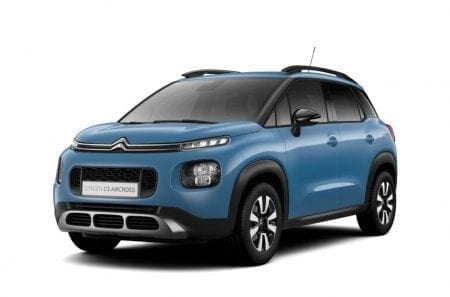
Grille test: Peugeot 3008 2.0 HDi (120 kW) Premium Pack
Aside from the two zeros in the name, the 3008 has even more oddities, but overall it turned out to be a real refreshment for buyers. The main difference, of course, is in appearance. It looks a little slanted and baroque, but its height allows for a higher fit, which is very popular today. The radiator grille with large air vents under the center bumper looks rather aggressive, but in its own way pretty cute.
Otherwise, the 3008 looks like a kind of slightly raised van with a longitudinally split tailgate, which turns out to be very useful. Usually the larger part that opens up is used, but if we need to load other heavier or larger luggage, opening the lower part of the door makes our job easier. One of the important reasons to buy a Peugeot 3008 is, of course, the capacity of the trunk.
Rear seat passengers can also be happy with the space, and there is less space in the front seats, which makes the driver and front passenger feel cramped, mainly due to the huge center backrest.
Working with the buttons also causes some problems before the driver gets used to their location and abundance. There were a lot of them in the Peugeot tested because the equipment was rich, complemented by a screen on the dashboard above the sensors in the driver's field of view, where the driver projects useful information about the current driving (e.g. speed). The case is very useful, but it cannot be said that it can permanently replace the classic counters, because sometimes (with solar reflection) the data on the screen cannot be read reliably.
Too much hassle to write that the handling is excellent were also caused by the automatic transmission lever and the automatic parking brake release button. It took quite a bit of skill to loosen the button to make it neater after the car automatically applied the brake.
We may be less satisfied with transparency and precise control or parking. The Peugeot 3008 is so rounded that it is not transparent enough when parking, and the assistance of additional system sensors seems inaccurate, which makes it very difficult for the driver to evaluate smaller parking "holes".
Paired with an automatic transmission (Peugeot describes it as Porsche's sequential tiptronic system) it's also a slightly more powerful 163-litre turbodiesel engine (XNUMX "horses"). The transmission seems to be the best part of the test car, as it is really powerful, and the transmission comfortably follows the driver's wishes - in position D. If we really need sequential gear shifting, we will soon find that the auxiliary electronics follow the road. much better than the average driver.
However, the automatic transmission has had a significant impact on economy. To achieve an average mileage of below XNUMX, great care had to be taken when accelerating and, otherwise, too generous on the gas, so this automatic transmission also confirmed the well-known fact of lower fuel efficiency.
The tested 3008 also included (at an additional cost) a navigation system, which significantly improves driving comfort, since in addition to being able to find the right route (Slovenian road maps were far from the latest), it also contains a Bluetooth interface for easy connection. the mobile phone into the hands-free system. In addition, we could enjoy music from the JBL sound system, but aside from the volume, the sound is not convincing enough.
Tomaž Porekar, photo: Aleš Pavletič
Peugeot 3008 2.0 HDi (120 kW) Premium Pack
Basic data
| Sales: | Peugeot Slovenia doo |
|---|---|
| Base model price: | 29.850 € |
| Test model cost: | 32.500 € |
| Calculate the cost of auto insurance | |
| Power: | 120kW (163 KM) |
| Acceleration (0-100 km / h): | 10,2 with |
| Maximum speed: | 190 km / h |
| Mixed flow ECE: | 6,6l / 100km |
Technical information
| engine: | 4-cylinder - 4-stroke - in-line - turbodiesel - displacement 1.997 cm3 - maximum power 120 kW (163 hp) at 3.750 rpm - maximum torque 340 Nm at 2.000 rpm. |
|---|---|
| Energy transfer: | engine-driven front wheels - 6-speed automatic transmission - tires 235/50 R 19 W (Hankook Optimo). |
| Capacity: | 190 km/h top speed - 0-100 km/h acceleration in 10,2 s - fuel consumption (ECE) 8,7/5,4/6,6 l/100 km, CO2 emissions 173 g/km. |
| Mass: | empty vehicle 1.539 kg - permissible gross weight 2.100 kg. |
| External dimensions: | length 4.365 mm - width 1.837 mm - height 1.639 mm - wheelbase 2.613 mm - trunk. |
| Inner dimensions: | fuel tank 60 l |
| Box: | 435-1.245 l |
Our measurements
| T = 12 ° C / p = 1.001 mbar / rel. vl. = 39% / odometer status: 4.237 km | |
| Acceleration 0-100km: | 10,4s |
|---|---|
| 402m from the city: | 17,5 years ( 130 km / h) |
| Maximum speed: | 190km / h (WE.) |
| test consumption: | 9,1 l / 100km |
| Braking distance at 100 km / h: | 41,2m |
| AM table: | 40m |
evaluation
It is still true that this is the best Peugeot ever. But with this best-equipped and most expensive 3008, the only question is whether the money is invested in it right.
We praise and reproach
comfort
space in the rear and in the trunk
engine and transmission
Equipment
bad visibility
cheap center console look
excessive fuel consumption
lack of navigation
unsatisfactory brakes
